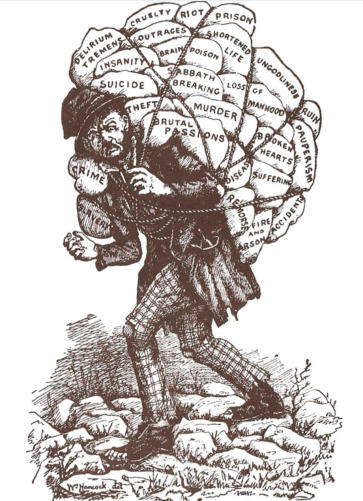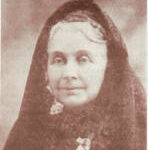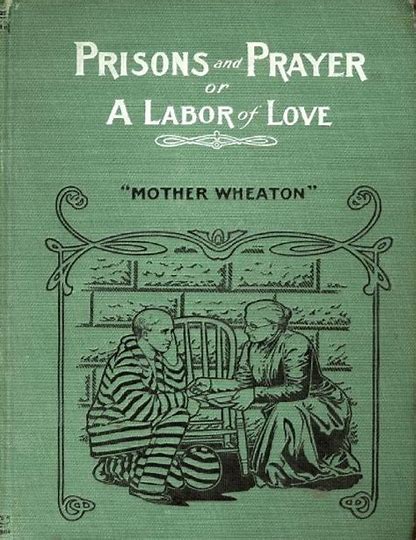Union Gospel Mission History
Serving the Sioux Falls community for over 124 years!
How It All Began
The City Mission Movement goes back to the year 1826, when David Nasmith, a former manufacturer’s apprentice, founded the Glasgow City Mission (Scotland) for the purpose of practical ministry for the underprivileged, proclaiming the Gospel in everyday language. He also founded the Dublin Christian Mission, London City Mission, as well as 31 other Missions in the United States and Canada.
In 1872, Gospel Rescue Mission (New York City) was the first to open in the US when former alcoholic and ex-con Jeremiah McAuley founded “Helping Hand for Man” on the site of a licentious dance hall, backed by stock trader Alfrederich Hatch, who believed in uplifting those he called the “undeserving/unworthy poor.”
Thomas F. Morse was convicted in Roberts County, SD for the shooting death of a Sisseton man in September of 1893. While in prison, Morse gave his heart and life to Jesus Christ through the ministry of Mother Wheaton, a woman who visited the prison and proclaimed the Gospel. He was granted a full pardon by Governor Andrew Lee in 1898. On March 17, 1900 he became the founder of the Sioux Falls City Rescue Mission, making it the second oldest Mission in the country today.
It is humbling to reflect on what one woman’s prison ministry and one man’s redemption in Christ has established – a legacy bearing abundant fruit, one that has changed countless lives for well over a century and is still going strong today. It’s amazing what the Lord can do!


Burdens of the Drink Habit
As history has it, this image was found in a load of items that were brought to the Mission, sometime in the 1980’s, from a building somewhere in Sioux Falls. It was hanging in the chapel until about November of 1993, when its message became too much for some individual to endure. The person wrecked the frame that it was in and tore the picture to pieces. Only one of the pieces was found, glued to the wall of another room at the mission.
Fortunately, two copies were made of the original, as requested by a guest of the Mission about six months prior to its destruction. The name of the artist is William Hancock and the origin of the drawing is unknown.

Ministry History – Mother Wheaton
The woman who visited the South Dakota State Prison while Morse was there was Elizabeth Ryder Wheaton (1844-1923). This is the information we currently have for Elizabeth, known as Mother Wheaton.
She was a social reformer and evangelist. Elizabeth Ryder was born to John and Mary Van Nest Ryder in Wayne County, Ohio. Her parents, both Christians, died by the time she was five years of age. At the death of her mother, Elizabeth was separated from her siblings and was reunited only with her brothers, J. M. and Emanuel, and her sister, Lida Ryder Hoffman, in 1902.
At first Elizabeth was placed in a foster home where she remained until the family moved away. Subsequently she was reared by her grandparents. As a child, she worshiped among the Methodists. Later she would describe her commitment to Christianity at this time as “normal.”
At age eighteen Elizabeth married J. A. Wheaton. They had one son, but within two years of their marriage, both her husband and their child had died. Elizabeth’s self-acknowledged conversion came in the wake of their deaths. In the years that followed, she heard of “holiness” and the “baptism of the Holy Spirit for service.” She began to attend a church some distance from her home where she received her “sanctification.” On November 11, 1883, she claimed to have received a vision of Jesus in which she was asked to follow him. Thus she began her ministry.
Mother Wheaton was primarily known as a prison evangelist, although she also engaged in rescue work. She was not attached to any single denomination and ministered frequently in street meetings, especially in front of bars and houses of prostitution, on railroad cars, in Peniel Missions, and in various Crittenden rescue centers. From 1895 onward, she made Missionary Training Home in Tabor, Iowa, under the supervision of Elder Weavers.

Her book entitled “Prisons and Prayer, A Labor of Love” can be found here.
For a period of time Wheaton was accompanied and assisted by a Mrs. Hattie Worcester Kelly. In later years, Wheaton continued her independent faith venture alone, ministering to those in state and federal prisons in Canada, Mexico, and nearly every state and territory of the US. She carried numerous letters of reference, signed by governors and wardens alike. Her reputation was widely known, and she is said to have become such a well-known figure on the railroads that she was frequently allowed to travel for free.
Elizabeth was featured speaker at the semiannual camp meeting of the Holiness Church in Southern California in April 1905, where she told of her work in the slums and prisons and engaged in altar work among the seekers present.
She was always interested in foreign missions and made two trips to Europe. She was jailed in Edinburgh, Scotland, for holding a street meeting. Touched by reports from famine-ravaged India, Wheaton donated twenty dollars annually to support a young Indian boy at the Frontier Faith Mission superintended by Robert and Lara E. Jarvis in Lahore.
In her declining years, Wheaton was unable to continue her heavy travel schedule. She suffered both physical and emotional trauma and was ultimately confined to her home in Tabor, Iowa. A letter she wrote six weeks before her death indicated that she was lonely, living in anticipation of her imminent death. Elizabeth Wheaton died on July 28, 1923, at Faith Home in Tabor.

